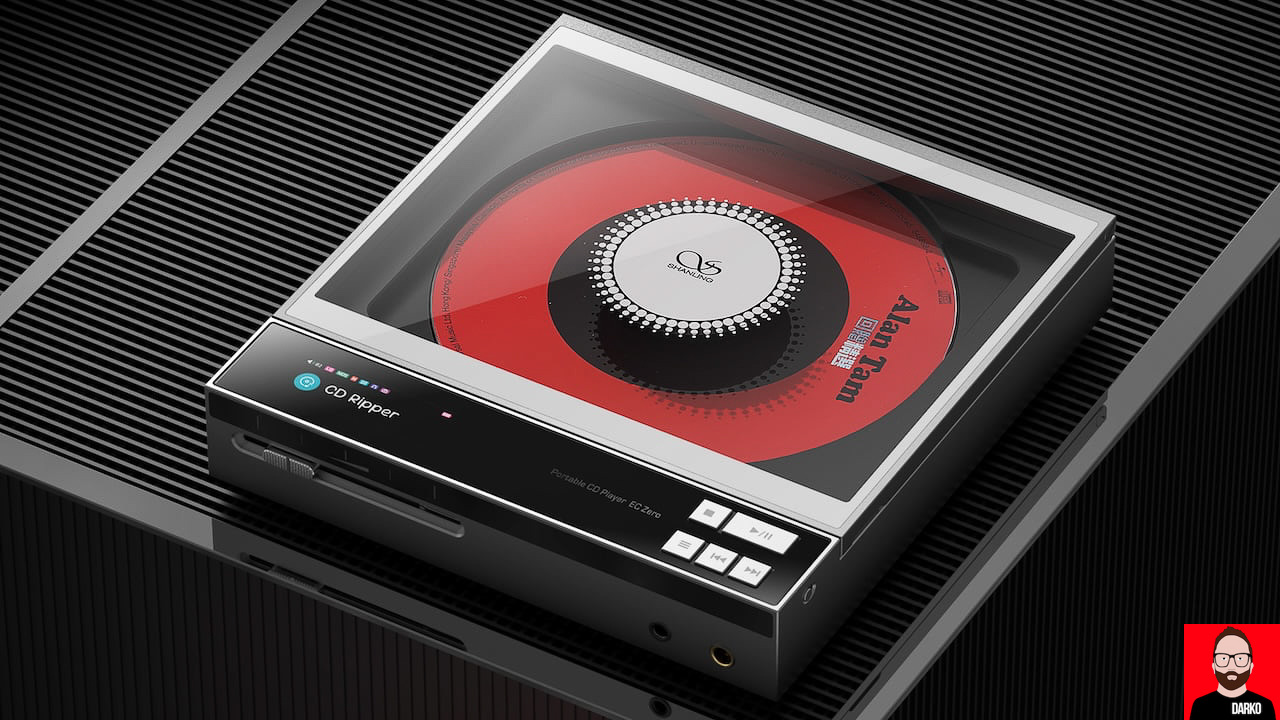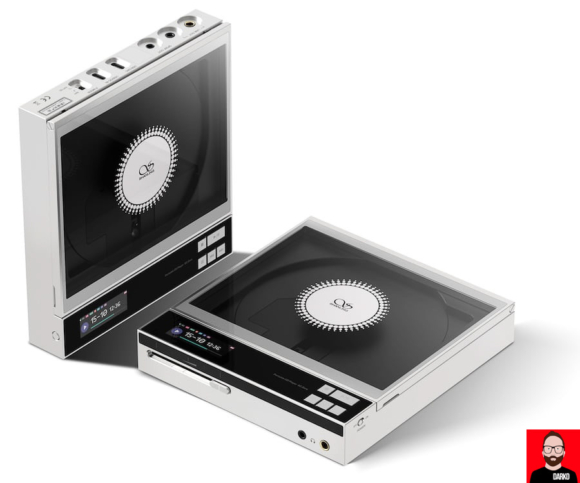The Shanling ECZero AKM isn’t just another plain-jane portable CD player trying to ride a nostalgia wave. Beyond spinning discs, it rips CDs to USB drives, transmits wirelessly via Bluetooth, offers balanced and unbalanced headphone outputs and includes digital coaxial/optical outputs for CD transport deployment.
Let’s break it down…
Solid-state simplicity
For its new ECZero AKM, Shanling has essentially stripped the tubes and R2R DAC from its ECZero T in favour of an all-solid-state design built around an AKM AK4493S DAC and SGM8262 op-amps.
Driving force
Wired headphones talk to the front-mounted ports: a 3.5mm headphone jack pushes 525mW into 32 Ohms. The balanced 4.4mm headphone output delivers 836mW per channel into the same load in high gain…and when using external power. These numbers suggest sufficient grunt for most headphones short of planar magnetic power pigs, but Shanling has also reportedly lowered the output impedance on these outputs to make them more IEM-friendly.
The rear edge houses the line-level connections. These include a 3.5mm line out, 4.4mm balanced line out and a “3.5mm combined coaxial/optical SPDIF” socket for digital connections to external DACs.
Touch and feel
The 1.68″ colour LCD keeps things simple with track info, playback status and volume level. Nothing too fancy. Physical buttons control transport functions while a volume slider manages the 100-step digital attenuation across three selectable gain modes.
On vital statistics, the ECZero AKM measures 158 x 150 x 28mm and weighs 575 grams. Its housing is metal with tempered glass covering the disc mechanism. That mechanism employs magnetic pressure to stabilise the CD during playback, reducing vibration and minimising read errors: a crucial consideration for portable use.
Battery smarts
According to Shanling, the 5500mAh battery promises ten hours of portable playback. USB-C charging replenishes the cell — the same port accepts external power for desktop use.
Cutting the cord
Bluetooth 5.3 opens wireless streaming options, though the ECZero AKM transmits rather than receives. It supports SBC, aptX, and aptX Adaptive codecs. The absence of AAC means AirPods users will be stuck with basic SBC transmission, while the lack of LDAC limits options for Sony headphone owners. The transmission-only implementation makes sense for a CD player (you’re sending audio out, not receiving it), but it does mean the ECZero AKM can’t function as a Bluetooth DAC for your phone.
Digital archiving
CD ripping works through USB-C connection: insert the disc, connect a USB drive to the dedicated port, press record, and the player does the rest. The process happens in real-time playback speed, so ripping a 70-minute album takes 70 minutes. File format options aren’t specified in the documentation, leaving questions about whether you’ll get FLAC, WAV, or MP3 files. Whatever the format, you’ll need to tag your files manually after ripping. Still, having any ripping capability in a portable player counts as a win for archivists and collectors who want backup copies of their physical media.
Computer audio bridge
A second USB-C port transforms the ECZero AKM into a capable desktop DAC for computer audio, broadening its utility beyond spinning discs. Here, the AK4493S DAC’s support for PCM up to 32-bit/768kHz and DSD256 actually matters. These specifications far exceed the Red Book CD standard of 16-bit/44.1kHz but come into play when streaming high-resolution files from a computer. This overspecification for CD playback becomes a genuine feature for USB DAC mode, ensuring the chip operates well within its comfort zone regardless of source material.
Reality check
The ECZero AKM is priced at US$319. That’s US$240 less than the tube-equipped ECZero T at US$589. The price difference buys you solid-state simplicity over tube warmth; whether that trade-off works depends on your sonic preferences and budget reality.
And the bigger question isn’t whether portable CD players make rational sense in 2025 (they don’t), but whether enough nostalgic audiophiles exist to sustain this curious revival.
Further information: Shanling




